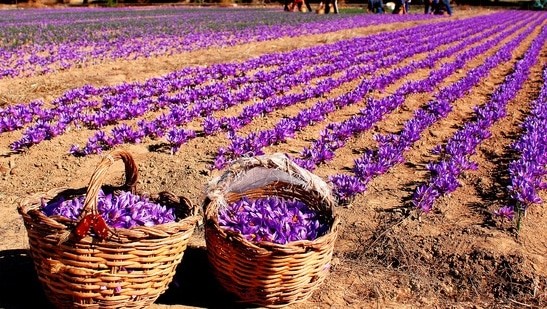Pulwama, Apr 25: Researchers from the Division of Plant Biotechnology at Sher-e-Kashmir University of Agricultural Sciences and Technology of Kashmir (SKUAST-K) have identified Fusarium acuminatum as a causal agent of saffron corm rot in Jammu and Kashmir.
This marks the first confirmed report of F. acuminatum affecting saffron (Crocus sativus) in India—the plant that produces the world’s most valuable spice.
Dr. Amjad Hussaini, Head of the Division of Plant Biotechnology at SKUAST-K, said the study was conducted in the Pampore area of South Kashmir’s Pulwama district in collaboration with Central Institute of Temperate Horticulture ( CITH) Srinagar .
The study provides a comprehensive identification of the pathogen using a combination of morphological, pathological, and advanced molecular techniques.
Traditionally, Fusarium oxysporum was believed to be the primary cause of saffron corm rot, based on morphological features and basic DNA sequencing. However, the new study employed a polyphasic approach, including multigene sequence analysis, to accurately identify F. acuminatum as the pathogen.
Saffron cultivation in India is largely confined to Jammu and Kashmir, with Pulwama district accounting for nearly 76% of the total cultivated area. The crop, known for its high economic and cultural value, faces a serious threat from corm rot—a soil-borne disease that spreads rapidly during the flowering (October–November) and grubbing (May–July) periods.
Field surveys have reported an alarming 70–80% disease incidence across Kashmir, with some fields experiencing up to 100% infection. The disease enters primarily through injuries to the corms, which subsequently decay and turn into a black, powdery mass, often accompanied by die-back symptoms in the plant’s foliage.
Earlier studies in India did not conclusively identify all contributing pathogens due to limited molecular data. This discovery, therefore, fills a critical gap in saffron pathology research and opens new avenues for disease management and resistance breeding.
The research was conducted under the supervision of Dr. Amjad Hussaini by Tanzeela Bashir and supported by Syed Anam ul Haq, Zahoor A. Bhat, Sajad Un Nabi, and Shahid A. Padder.








